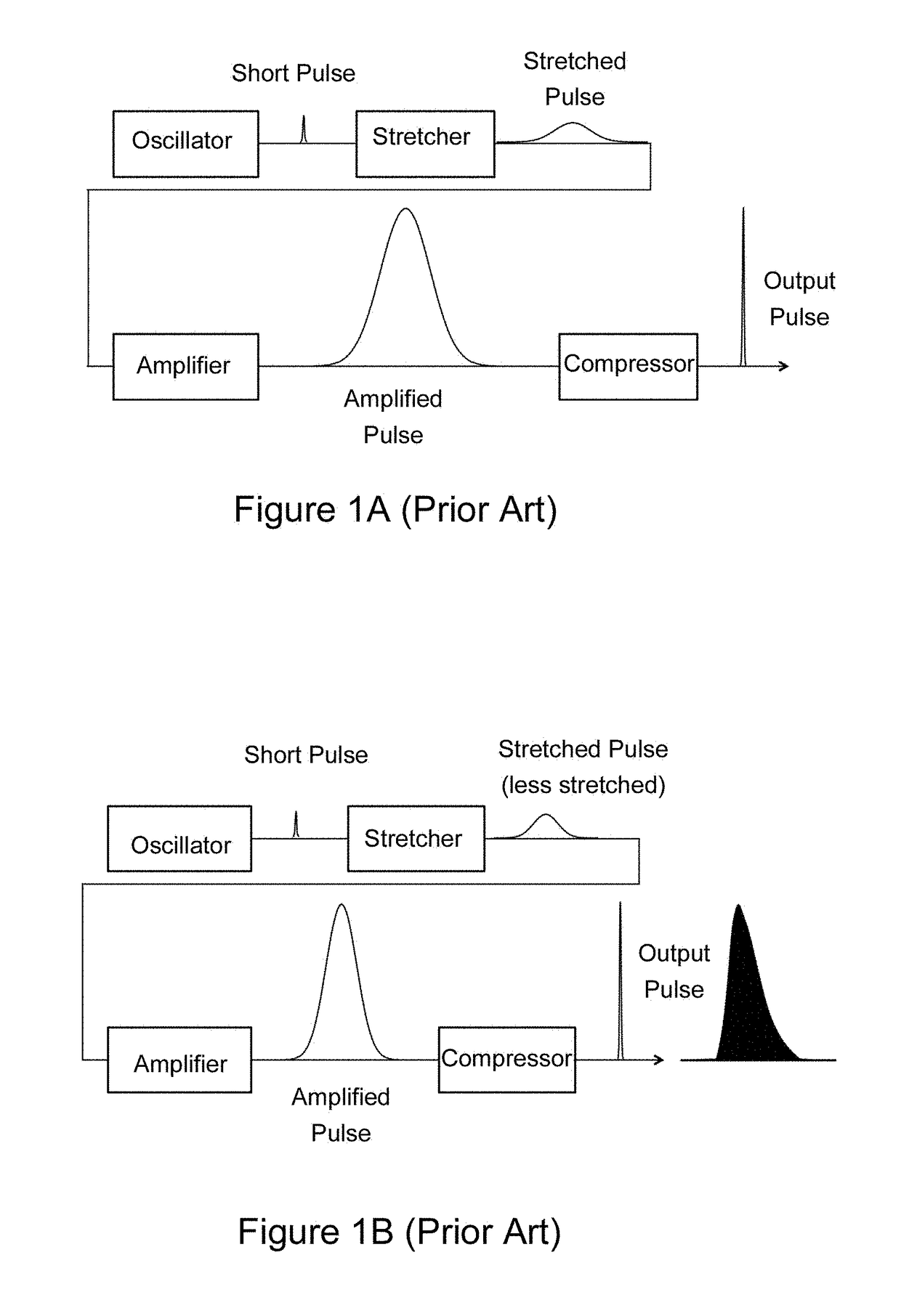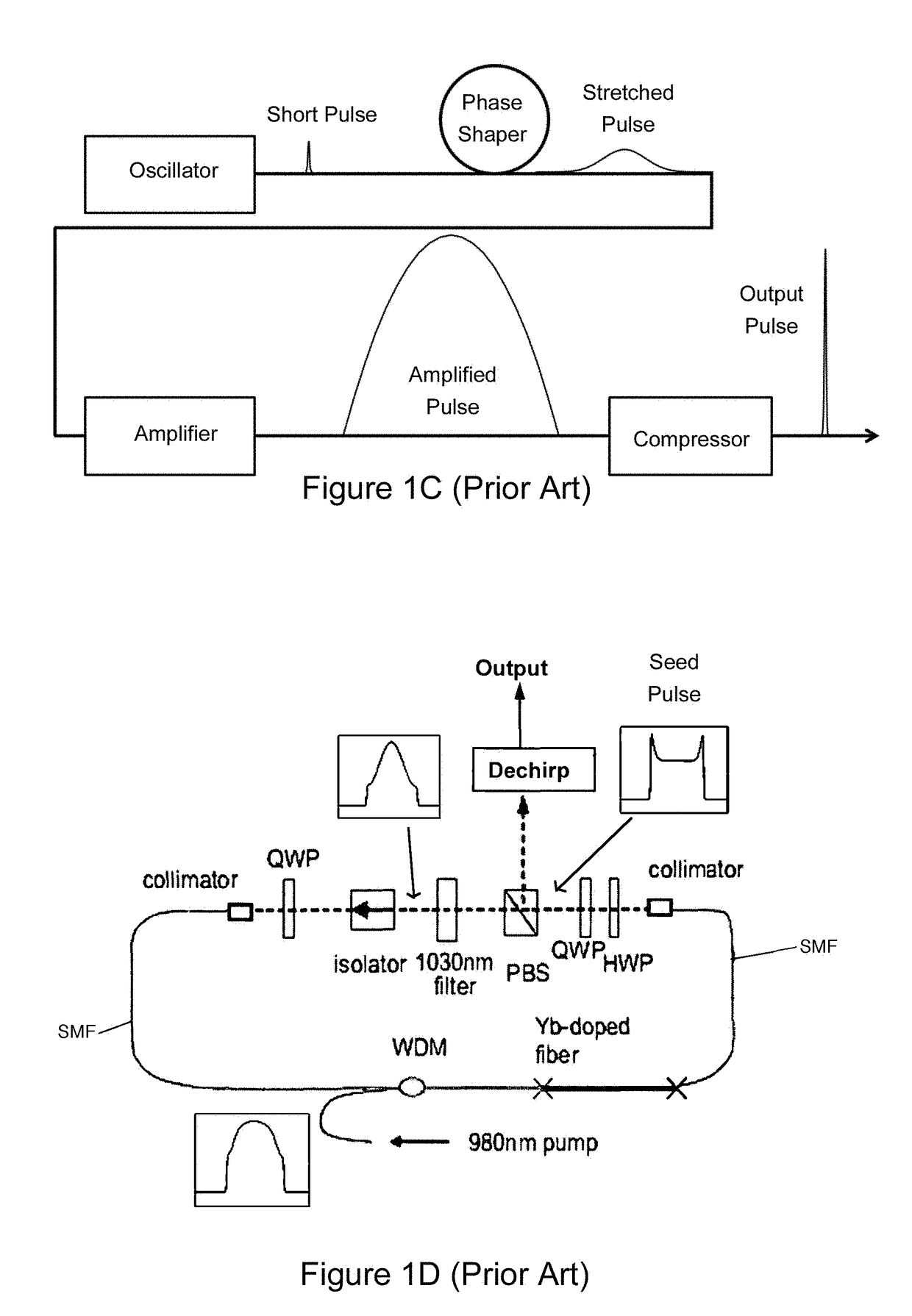Single pass amplification of dissipative soliton-like seed pulses
a technology of soliton-like seed pulses and fiber amplification, which is applied in the field of single-pass fiber amplification of dissipative soliton-like seed pulses, can solve the problems of cpa, inability to robustly adapt to nonlinear phase shifts, and improve the obtainable output energy
- Summary
- Abstract
- Description
- Claims
- Application Information
AI Technical Summary
Benefits of technology
Problems solved by technology
Method used
Image
Examples
embodiment 200
[0023]FIG. 2 is a block diagram illustrating an embodiment 200 of an amplifier according to the present invention. The amplifier system begins with a seed pulse train 202 with the pulses having a pulse duration in excess of 1 ps. In the preferred embodiment, this oscillator is tuned to produce a pulse appropriate for amplification, having a typical spectral width of 8 nm near 1040 nm wavelength, emerging from the model-locked oscillator with a spectral phase “chirp” sufficient to stretch the pulse to 10 ps duration. The bat ears shaped pulse produced by an ANDi laser is ideal (see FIG. 1D).
[0024]Alternative to directly adjusting the modelocked laser operating parameters to obtain the optimum pulse, a conventional pulse may optionally be shaped in other ways, as shown in FIG. 3.
[0025]The pulse train 202 is then directed into one or more fiber amplifiers via a pump combiner 206 that combines pump light 204 and seed light 202 into a passive (non-doped) fiber (not shown), or into the fi...
second embodiment
[0033]FIG. 7A illustrates the present invention with an 8 nm wide bandpass filter. In this embodiment, the dissipative soliton pulse is spectrally filtered before amplification. The spectrum directly from the oscillator is shown, as is the filtered spectrum at the output of the birefringent spectral filter. The dashed line shows the calculated transmission function of the spectral filter. The spectrally filtered pulse is directed into the pulse picker described above. The pulse then propagates through the pump combiner described above, and further through the 2 stage fiber amplifier as described above. The pump power is set to 30 W and the output power of the resulting pulse train is 10 W. The output spectrum is as given in the bottom panel of FIG. 7A. The two curves again correspond to the output spectrum of the amplifier seeded by filtered and unfiltered input spectra. While the characteristic “bat-eared” spectral shape is shown in both cases, the pulse background was reduced by t...
PUM
 Login to View More
Login to View More Abstract
Description
Claims
Application Information
 Login to View More
Login to View More - R&D
- Intellectual Property
- Life Sciences
- Materials
- Tech Scout
- Unparalleled Data Quality
- Higher Quality Content
- 60% Fewer Hallucinations
Browse by: Latest US Patents, China's latest patents, Technical Efficacy Thesaurus, Application Domain, Technology Topic, Popular Technical Reports.
© 2025 PatSnap. All rights reserved.Legal|Privacy policy|Modern Slavery Act Transparency Statement|Sitemap|About US| Contact US: help@patsnap.com



